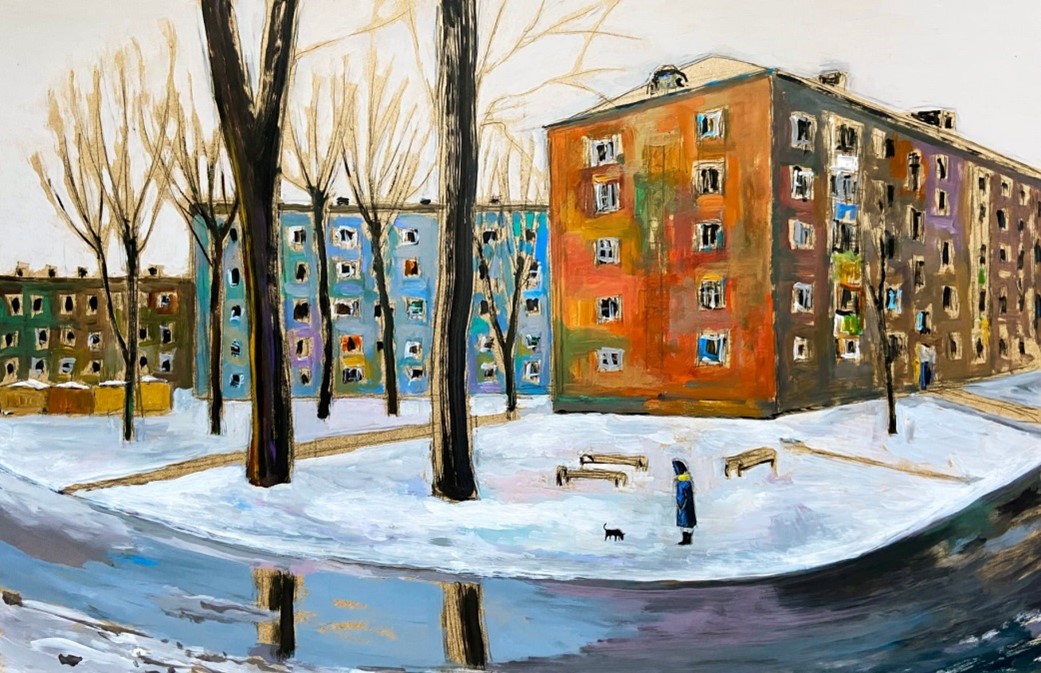Erarta Museum of Contemporary Art presented an exhibition by Alexander Daniel whose artworks aim for the conceptual ideal of a ‘stone’ – compositional and chromatic integrity and temporal and spatial infinity
-
Paintings reflecting the artist’s attempt to strip away all that is unnecessary and get to the core
-
Expressive stereoscopic landscapes full of spatial and spiritual depth
-
Dynamic canvases evoking the fast pace of modern life
Alexander Daniel was born in Leningrad in 1947. Passionate about drawing since childhood years, he was grateful to his parents for putting no obstacles to this passion. In 1970, Alexander graduated from the Leningrad Vera Mukhina Higher School of Art and Design with a degree in Design.
The artist’s all-consuming search for universal structures present in the compositions of classical paintings and icons ultimately found him among the followers of Grigory Dlugach (1908–1988). A former student of Kuzma Petrov-Vodkin at the Academy of Arts in the 1920s, Dlugach was expelled in his third year of studies on account of his alleged ‘formalism.’ Through studying and copying masterpieces from the State Hermitage Museum collection, Dlugach devised his own analytical method to reveal the painting’s inner structure. An important concept within the aphoristic parlance of the ‘old man’ (as the students fondly called Dlugach) was that of a ‘stone’ – a metaphor for the compositional and chromatic integrity of a painting, as well as its temporal and spatial infinity.
Alexander Daniel maintains that one characteristic feature of the Hermitage group was its tendency towards escapism. Its members, living in the Soviet Union and insulated from the Western trends, turned to the art of the past to ‘check harmony by algebraic rules,’ searching for logical design in the intuitive acts of the great masters, from Veronese to Vrubel and Picasso). With time, the Hermitage group evolved into a movement focusing not so much on studying as on interpreting classical paintings.
Alexander Daniel spent almost four decades teaching at his own studio and at the School of Stage Design and Theatre Technology of the Leningrad State Institute of Theatre, Music and Filmmaking. A true intellectual and an interesting conversation partner, he shares profound insights into the global art trends. Speaking of his creative method, the artist quotes Gustave Flaubert:‘The author, in his work, must be like God in the Universe, present everywhere and visible nowhere.’ This translates into conscious avoidance of self-expression: to express one’s self means to eclipse one’s subject matter. For Alexander Daniel, the ultimate goal is to purify the visual representation, stripping away all that is unnecessary and getting to the very core of the image. This approach finds close parallels in icon painting.
Interestingly, although the labels indicate the year when the artwork was started, there is no completion date, suggesting that these are essentially works in progress that come to life only when the artist revisits them to add some altering touches.
After five years with the Hermitage group, Alexander Daniel embarked on his own creative journey. The artist is fond of metaphors. Take, for instance, the symbolism of the Crucifixion in his works: conventional still lifes are transformed here into allegories of Calvary, while a crowd of critics in The Anatomy Lesson is crucifying the artist on his easel.
Daniel is perhaps the most ‘contemporary’ artist of the entire Hermitage roster: his paintings express the fast pace of the modern life. The classical vistas of his home city of St. Petersburg are painted with a poignant feeling of love and affection. The landscapes featuring a restrained colour palette seem almost stereoscopic in their complex graphic patterns of expressive lines and brushstrokes holding the whole composition together like a crystal lattice, adding both spatial and spiritual depth. ‘The composition is the Holy Spirit of any artwork,’ says the artist, constructing it in a way that creates a whole and undivided spacetime, approaching the very pinnacle of a ‘stone’ that the ‘old man’ once spoke about.









